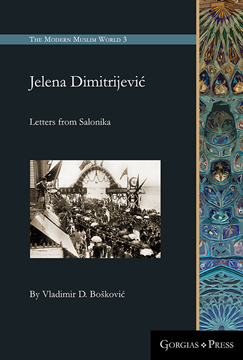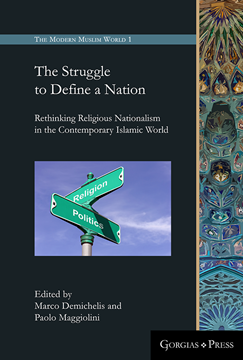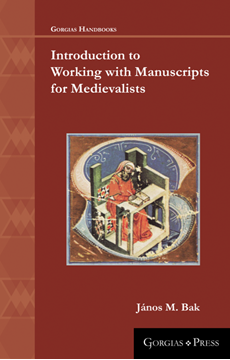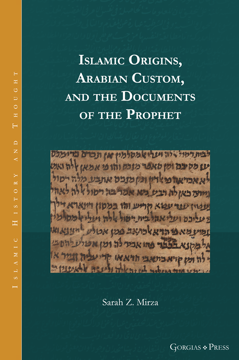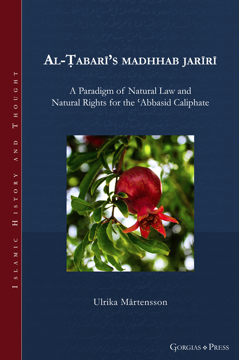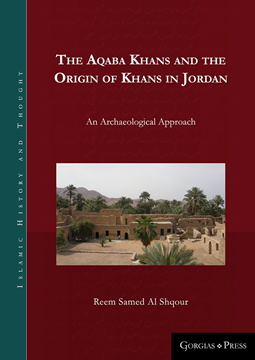Jelena Dimitrijević
Letters from Salonika
Series: The Modern Muslim World 3
ISBN: 978-1-4632-0641-3
An English translation of the Letters from Salonika by Jelena Dimitrijević, accompanied by a substantial critical introduction and a commentary. The book comprises author’s impressions from Salonika in the summer of 1908, in the midst of the Young Turk Revolution. The narrative focuses on the question of the “unveiling” of Muslim women, but also vividly portrays the vanished cityscape of Ottoman Salonika and gives accounts of the city’s Turkish, Jewish, Mu’min, and Greek communities.
$114.95 (USD) $68.97 (USD)
The Struggle to Define a Nation
Rethinking Religious Nationalism in the Contemporary Islamic World
Edited by Marco Demichelis & Paolo Maggiolini
Series: The Modern Muslim World 1
ISBN: 978-1-4632-0642-0
In the present edited volume, a serious of internationally recognised scholars adopt an inter-disciplinary approach to the study of ‘religious nationalism’ and the ‘nationalization’ of religion, through focusing on case studies and the religious affiliations and denominations of Islam, Christianity and Judaism. The aim of this book is to reconsider the ongoing debate between different communities of the so-called Islamic World regarding the nature of the nation and state, and the role of religion in a nation-state’s institutional ground, both as a viable integrative or segregating factor. It is through focusing on the state dimension, as the subject of collective action or socio- cultural and political representation, that the book proposes to reconsider the relationship between religion, politics and identity in the perspective of ‘religious nationalism’ and the ‘nationalization’ of religion in the contemporary Islamic World.
$214.00 (USD) $128.40 (USD)
Introduction to Working with Manuscripts for Medievalists
By János M. Bak
Series: Gorgias Handbooks 37
ISBN: 978-1-4632-0643-7
A short guide for studying, editing and translating medieval texts in manuscript form, outlining the technical steps for preparing a medieval manuscript for print: evaluating and describing the manuscript itself (transmission, provenance, and physical description), textual criticism (reconstruction, emendation, authenticity, dating, and authorship), and steps to preparing an edition or translation.
$35.00 (USD) $21.00 (USD)
Islamic Origins, Arabian Custom, and the Documents of the Prophet
Series: Islamic History and Thought 17
ISBN: 978-1-4632-0644-4
Early Islamic historical literature attributes several hundred pragmatic documents to the Prophet Muḥammad. The consistent use of epistolary and legal formulae, which are found only in these documents, encourages us to treat these texts as a corpus. In addition to consistent terminology, formulaic structure, and formulae, these texts show remarkable stability through transmission. A comparison of these texts with Umayyad and ʿAbbasid papyri reveals that the Prophet's documents reflect obsolete or otherwise unattested formulae. This study will demonstrate through three case studies the particular functions of these documents in the history of social relations in late antique Arabia.
$149.50 (USD) $89.70 (USD)
The Naval Commanders of Early Islam
A Prosopographical Approach
Series: Islamic History and Thought 16
ISBN: 978-1-4632-0645-1
Translated from Hebrew, this groundbreaking study sets out to answer one simple question: who were the commanders of the early Islamic navy? Using the prosopographical method, Elmakias unearths fresh information about early Islam's inexperienced and pioneering naval commanders. Through their fascinating biographies, we learn about the people who led the Islamic navy during the first conquests of the Islamic empire and helped to realise the spread and expansion of Islamic influence.
$114.95 (USD) $68.97 (USD)
The Center and the Source
Second Century Incarnational Christology and Early Catholic Christianity
ISBN: 978-1-4632-0646-8
This book proposes a model for explaining unity and diversity in early Christianity that centers about a clear confessional identity, allowing both extreme expressions of diversity of texts and traditions while explaining the exclusion of teachers, texts, and traditions that deviated from the confessional norm.
$203.00 (USD) $121.80 (USD)
Journal of Language Relationship 14/1-2
Volume 14/1-2
Series: Journal of Language Relationship 14/1-2
ISBN: 978-1-4632-0648-2
The Journal of Language Relationship is an international periodical publication devoted to the issues of comparative linguistics and the history of the human language. The Journal contains articles written in English and Russian, as well as scientific reviews, discussions and reports from international linguistic conferences and seminars.
$69.00 (USD) $41.40 (USD)
Al-Ṭabarī’s madhhab jarīrī
A Paradigm of Natural Law and Natural Rights for the ʿAbbasid Caliphate
Series: Islamic History and Thought 30
ISBN: 978-1-4632-0649-9
The book analyses all extant works by Ibn Jarir al-Tabari (d. 224/839–310/923), referring to their individual methodologies; their legacy as al-madhhab al-jariri; and their scholarly and socio- political context. Through the study of al-Tabari’s works, the book addresses research debates over dating the legal and scholarly institutions and their disciplines; authorship and transmission of scholarly writings; political theory and administration; and ‘origins’ of the Qur’an and Islam.
$135.00 (USD) $81.00 (USD)
The Two-Edged Sea
Heterotopias of Contemporary Mediterranean Migrant Literature
Series: The Modern Muslim World 12
ISBN: 978-1-4632-4372-2
Much Mediterranean migrant literature captures the Mediterranean’s fossilized binaries, North and South. But, The Two-Edged Sea also reveals that one inheres within the other. While the book explores two Mediterraneans, with asymmetrical power relations that reflect the sea’s northern and southern shores, it also delves into how they have been in dialogue with each other, effectively deconstructing the binary. Charting undocumented journeys from the Mediterranean’s southern shores, the book contributes both to discourse on migration literature and the current resurgence of the study of seas, while advancing the idea of the Mediterranean as both a dividing border and unifying contact zone.
$112.00 (USD) $67.20 (USD)
The Aqaba Khans and the Origin of Khans in Jordan
An Archaeological Approach
Series: Islamic History and Thought 9
ISBN: 978-1-4632-0651-2
A diachronic study of the development of Aqaba castle, an important Islamic khan at the junction of two major pilgrim routes, both based on Arabic and Crusader sources and the results of the excavations undertaken by Ghent University in Aqaba.
$208.00 (USD) $124.80 (USD)
